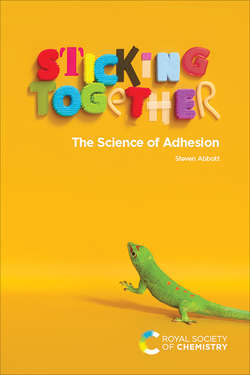Читать книгу Sticking Together - Steven Abbott - Страница 19
На сайте Литреса книга снята с продажи.
2.8 GRIFFITH'S LAW
ОглавлениеWe all know that bits of junk can get in the way of good adhesion, so we like to ensure that surfaces are clean before sticking them together. One reason for this is described by Griffith's Law.
An otherwise strong joint can easily fail if the stresses at the interface encounter a weak zone, such as a bit of dirt or its opposite, a void from a bubble of air. Our instincts tell us, correctly, that while a very small particle or void is not a problem, a bigger one is more of problem. Griffith's law tells us that if the size of the void is a, the stress required for failure is proportional to 1/√a. As the size of the defect gets bigger, the stress required for failure becomes smaller. When we make an adhesive joint, any defect from junk or air can be the source of a Griffith's crack failure, with larger defects leading to earlier failure.
As we shall see, when we try to break an adhesive joint apart, stresses are seldom distributed evenly across the joint. If a particle or void happens to be located in an area of low stress, it won't cause a problem. Conversely, if it is at a point of high stress, failure is assured. One of the frustrations of adhesion is that things seem to break for no obvious reason. Sometimes the reason might be a bit of otherwise harmless junk that's in the wrong place at the wrong time.
Griffith's law tells us that if we regularly attend to keeping adhesive free of large dirt particles and air pockets, our chances of unwelcome surprises reduce accordingly. That extra bit of cleaning before you assemble a joint really is worthwhile.
